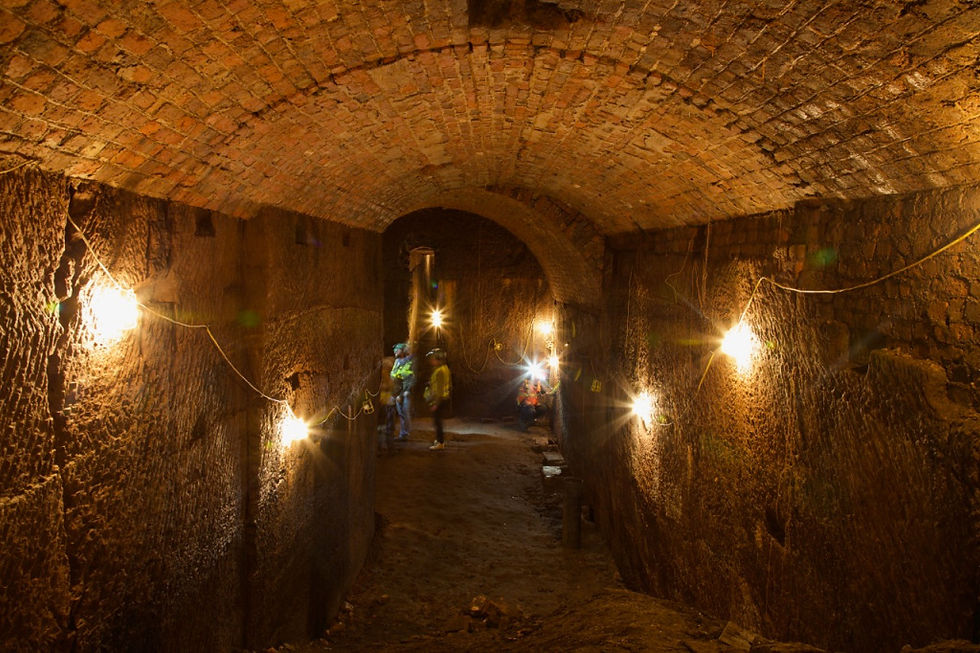
The Banqueting Hall beneath Joseph Williamson’s former home in Edge Hill, Liverpool
In 2012, I visited the Williamson Tunnels Heritage Centre in the Edge Hill inner-city suburb of Liverpool and toured a small section of the labyrinth of subterranean spaces built by dozens of men under the direction of local tobacco-merchant and principal landowner Joseph Williamson. Constructed from around 1805 to 1840 – the year Williamson died – the miles of subterranean tunnels still represent something of a mystery to those who are now trying to recover them. As I discovered on a return visit last weekend, organised by Stockport’s local tunnel expert Phil Catling and the Friends of Williamson Tunnels group, the tunnels are far more extensive than I had first imagined.

Just below street level at the Paddington site
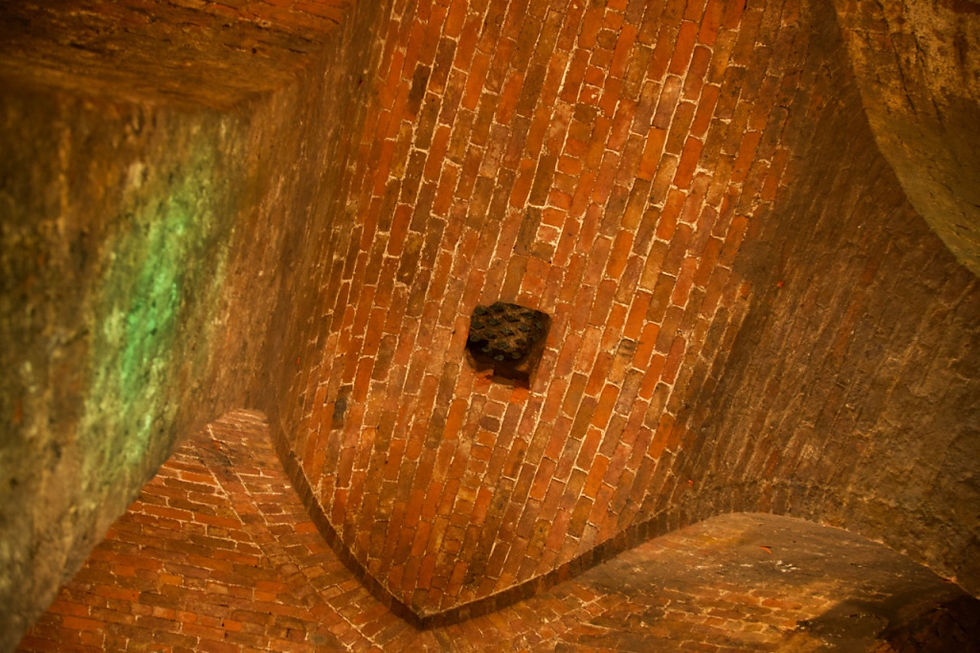
Tunnel ceiling at Level 1 of the Paddington site
There are in fact two distinct groups of volunteers that continue to excavate the tunnels – the Joseph Williamson Society and the Friends of Williamson Tunnels; and each group provides a very different insight into Williamson’s subterranean world, even as they both work towards the same end of making the tunnels publicly accessible. Whilst the Heritage Centre takes in the largest of the tunnels, it remains somewhat constrained by the dictates of health and safety – the visitor walkways tending to impede any direct apprehension of the scale of the underground spaces, even as they are necessary to embrace a broad range of visitors’ needs. That tour also focuses on the life and work of Williamson – rightly so, given the historical importance of the tunnels, but this focus tends to downplay the painstaking work that has been required to re-excavate the tunnels which, for well over a hundred years, were used as a convenient dumping ground for all sorts of waste – from tonnes of ash and coke left over from domestic fireplaces and industrial processes to a cornucopia of discarded tableware and other ceramic objects, now beautifully displayed inside the excavated tunnels themselves.
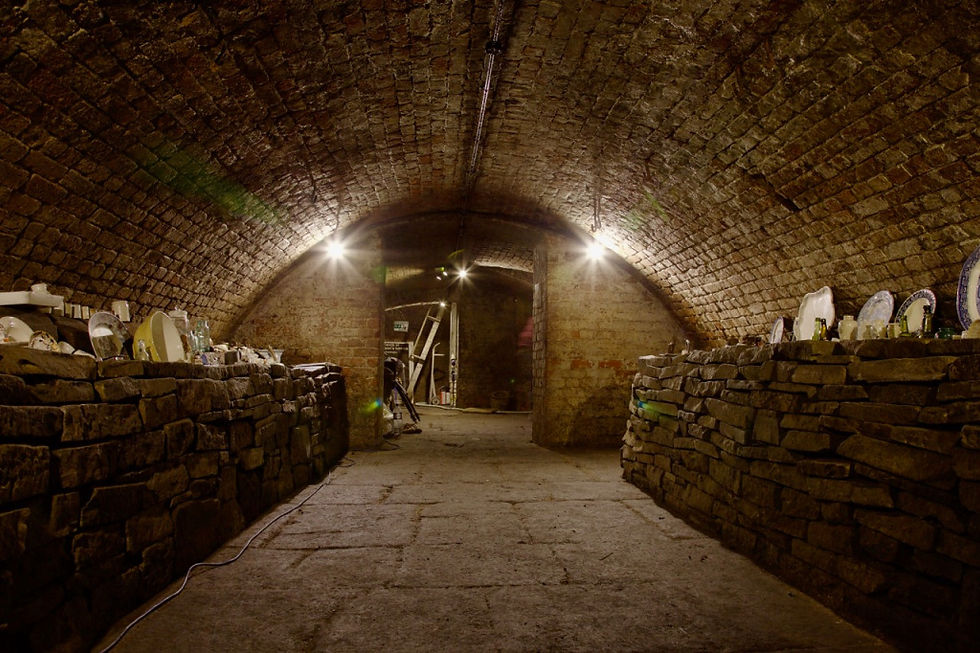
Found objects displayed inside one of the re-excavated tunnels
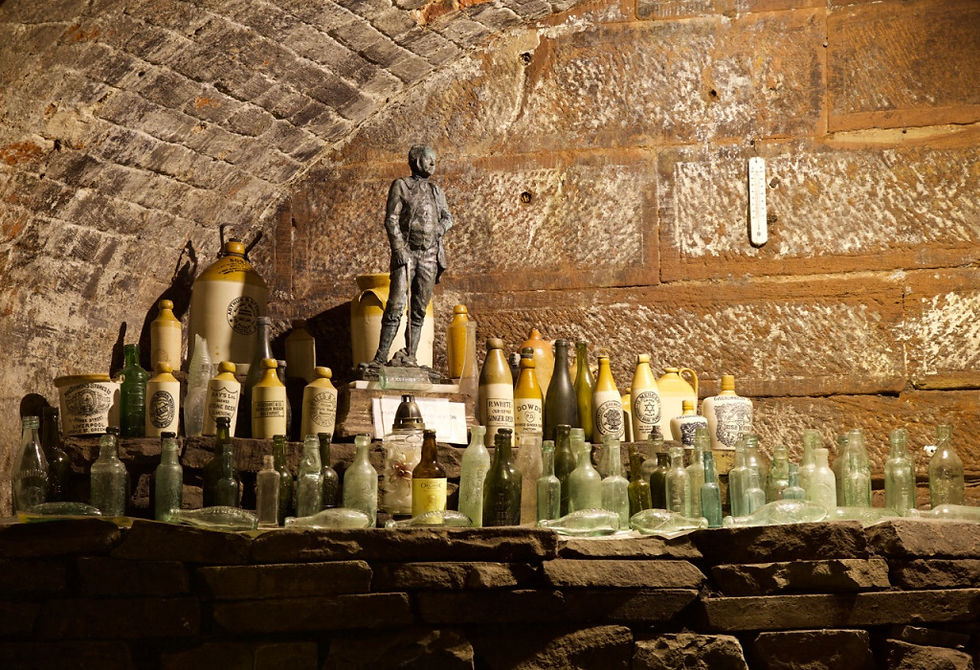
Found bottles and a statue of Joseph Williamson displayed in one of the re-excavated tunnels
Visiting the tunnels at the weekend, one can appreciate very clearly the work that continues to be undertaken by both groups of dedicated volunteers. Using only buckets secured on ropes, the volunteers have, since 1999, managed to excavate an extraordinary vertical world that, at the Paddington site, now extends 80 feet below the surface. In the last three years, the innumerable haulings of countless rubble-filled buckets has revealed the true extent of Williamson’s labyrinth – three levels of tunnels stacked on top of each other, descending today via an improvised scaffold supporting wooden steps. The painstaking excavation of these multiple layers of tunnels has revealed a vertiginous Piranesian world – a powerful reminder of the volumetric nature of underground space. Yet, as described in my original post here, these tunnels were seemingly built without obvious purpose, simply to provide unemployed men with much-needed work, even as that work was absurd. We may never know what Williamson was trying to achieve with his tunnels to nowhere, but that detracts in no way from their sublime grandeur.

View up from the bottom of Level 3 at the Paddington site
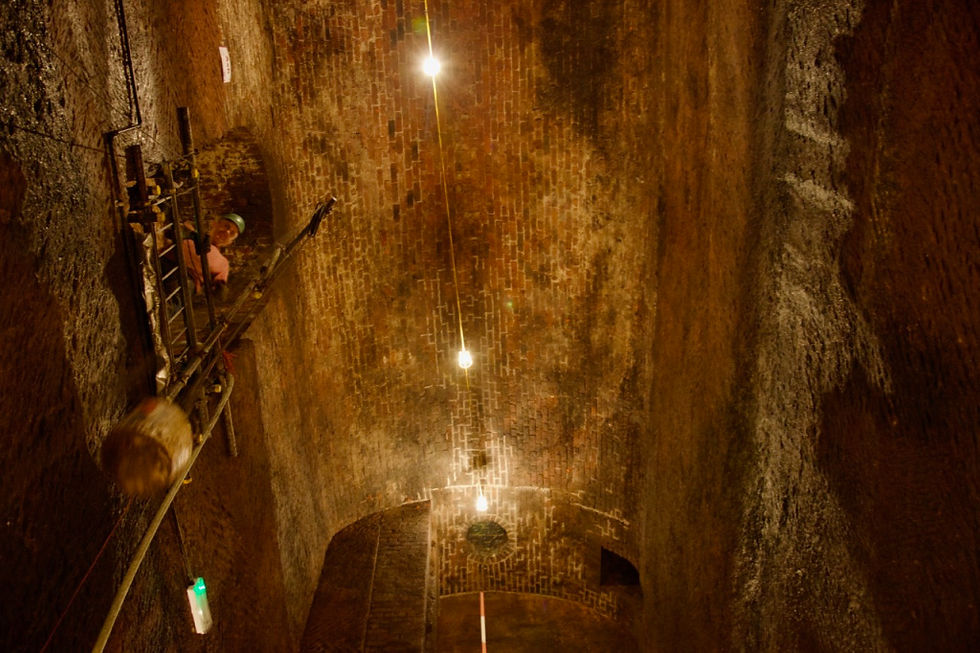
Hauling a bucket up from Level 3 at the Paddington site
The final site we visited was under Williamson’s house in Edge Hill; or rather, the remains of his house – a forlorn remnant of the original frontage and the only part still left standing. Yet, the cleared ground beyond has yielded several convenient access points to Williamson’s subterranean world below. A complex and decidedly confusing network of tunnels, many are still in the process of being excavated; but what has been found confirms Williamson as a master of subterranean theatrics. Entered via a very high but extremely narrow tunnel nicknamed ‘the Gash’, the so-called Banqueting Hall is as dramatic a space as the vertiginous stacked tunnels at the Paddington site. Partially filled with an enormous mound of material yet to be excavated, this high-arched space was reputedly once used by Williamson as a dining room for his house guests. Accessible today only via a 15-ft ladder, one can only guess at the reaction of Williamson’s unsuspecting visitors.
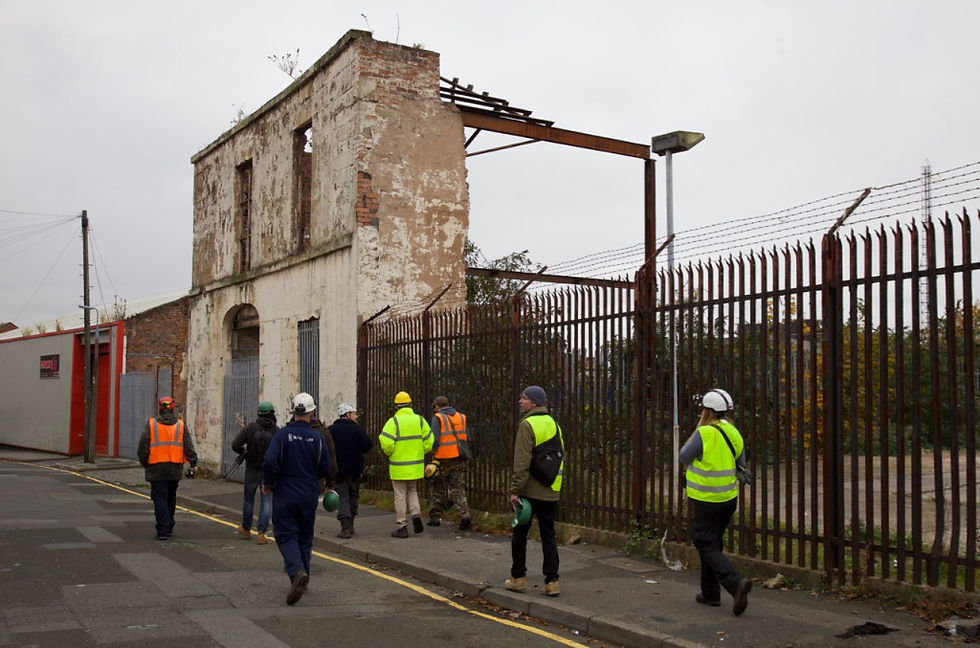
The remains of Joseph Williamson’s house on Mason Street, Edge Hill
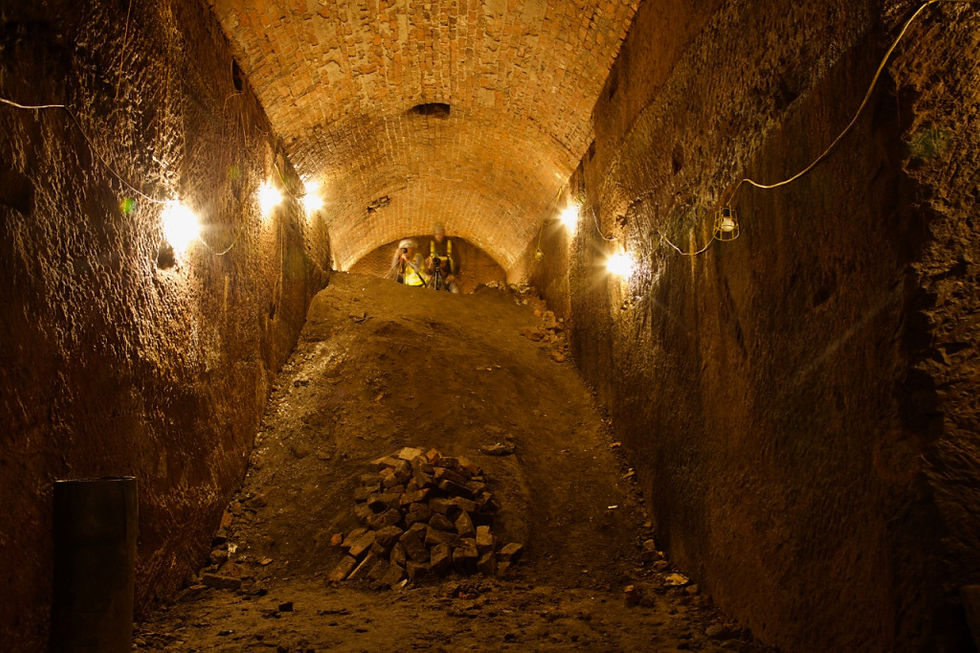
The Banqueting Hall underneath Joseph Williamson’s house

Exiting the Banqueting Hall via the Gash
Although I had written a piece on the Williamson Tunnels for the book Global Undergrounds: Exploring Cities Within, one of 80 global underground sites described in that publication, I had based my article on my original visit and subsequent post here. Now I regard these tunnels as one of the wonders of the subterranean world, not only on account of them reputedly being the world’s largest underground ‘folly’, but also because of the extraordinary way in which a group of local people have excavated them using virtually the same basic technologies employed by Williamson’s men nearly two hundred years ago. In the work of re-excavating these tunnels, a deep connection has been established between the present moment and the past, one that seems entirely absent in more conventional heritage-led subterranean attractions. Tunnelling, it seems, is not just about creating useful spaces; it is also driven by other desires, ones that centre on forging connections between people and the ground beneath their feet.
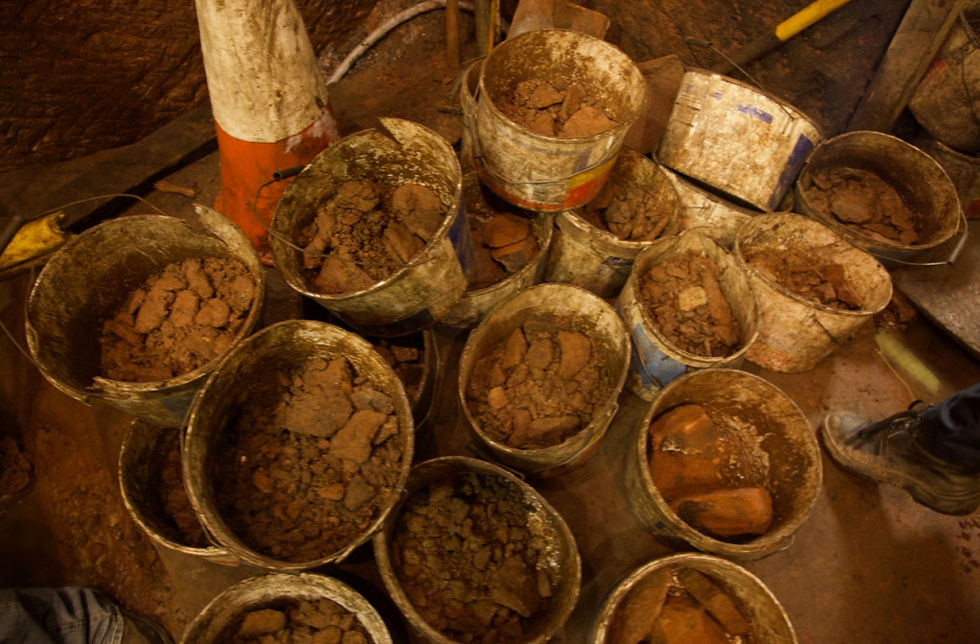
Some of the hundreds of buckets used to remove the accumulated debris from the tunnels
Kommentare